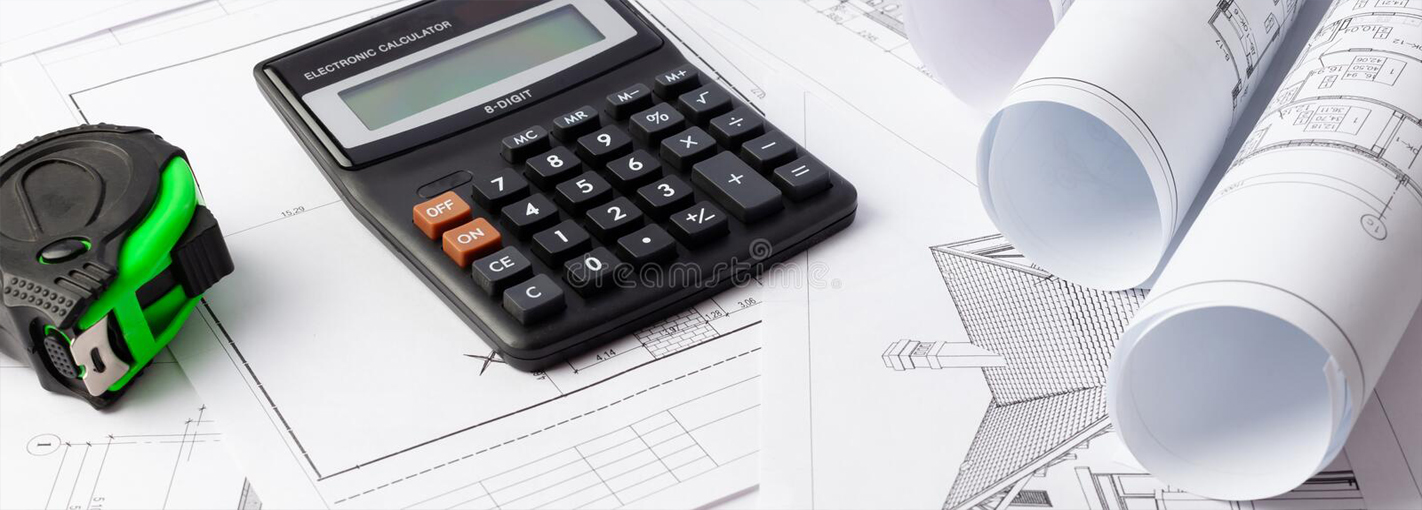1. SURVEY LABORATORY:
Survey Laboratory contains measuring instruments for distance, vertical and horizontal angles, and elevation. Students gain proficiency over diversified techniques for gathering field data with conventional, modern and advanced instruments in lab sessions. The available instrument in the lab includes Total Station Instruments, Digital Theodolites, Vernier Theodolites, Dumpy Levels, Prismatic And Surveyor Compass Units, Plane Table With Accessories Etc. It is very spacious that can accommodate more than 25 students to get demonstrated with sophisticated facilities and well qualified trained professionals in each session.
COURSE OBJECTIVES:
On completion of the course students will be able to
1. Define various survey terminology and carryout necessary corrections for errors
2. Comprehend the principle, purpose, equipment and error corrections in chain and compass surveying
3. Comprehend the principle, purpose, equipment and error corrections in plane table and theodolite surveying
4. Comprehend the map nomenclature and apply skills in map interpretation
5. Gather skill towards leveling and contouring with knowledge of purpose and different methods thereof Compute area and volume using different numerical algebraic methods
2. BMCT LABORATORY:
A concrete lab studies and tests concrete properties to ensure quality, durability, and performance for construction. It's a vital facility for civil engineering departments and the construction industry, housing equipment for mix design, material testing (cement, aggregates, concrete), fresh concrete testing, hardened concrete testing, and non-destructive testing. Activities in a concrete lab support education, research, quality control, and the development of new, advanced concrete formulations.
Key Functions
• Material Testing:
Evaluate the quality of raw materials like cement, aggregates (sand, gravel), and water.
• Mix Design:
Develop optimal concrete mixes by studying the impact of different aggregates, admixtures, and water-cement ratios.
• Fresh Concrete Testing:
Assess properties like workability using tests such as the slump test to determine consistency.
• Hardened Concrete Testing:
Measure strength, durability, and other properties of cured concrete, often using compression testing machines.
• Non-Destructive Testing (NDT):
Perform tests on existing concrete structures to verify quality without causing damage, especially in post-construction phases.
COURSE OBJECTIVES:
On completion of the course, students will be able to -
1. Use Universal testing machine to determine the stress-strain relation in steel.
2. Carry out tests to determine cement characteristics and strength.
3. Investigate properties of aggregates
4. Conduct tests to determine concrete workability and compressive strength
5. To perform non-destructive tests on concrete
6. To conduct strength tests on different types of bricks
3. CWP LABORATORY:
A construction work practice lab is an educational or training facility where students and professionals learn and apply hands-on construction techniques, material properties, and quality control processes. These labs use various equipment to provide practical experience in tasks like setting out buildings, bricklaying, reinforcement placement, concrete testing, and scaffolding, ensuring skills align with industry standards and practices.
PURPOSE AND OBJECTIVES:
• Skill Development:
Provides practical, hands-on training for essential construction tasks that are often complex and require significant skill.
• Material Understanding:
Teaches students about the properties of various construction materials, such as cement, aggregates, and concrete, through direct experimentation.
• Quality Control:
Equips students with the knowledge to conduct tests on materials and structures to ensure they meet quality and safety standards, often referencing IS and ASTM codes.
• Process Familiarization:
Introduces students to the standard procedures for various construction stages, from site preparation to final finishes.
• Industry Preparedness:
Prepares students for careers in civil engineering and construction management by providing practical experience with industry-relevant equipment and methods.
KEY ACTIVITIES AND EQUIPMENT:
• Material Testing:
Includes testing for cement, aggregates, concrete, and brick quality to understand properties like strength, workability, and durability.
• Site & Structural Operations:
Activities like setting out a building's centerlines, forming simple trusses, and understanding various brick bonds (English, Flemish) are practiced.
• Formwork & Reinforcement:
Training on setting up formwork (centering) for beams and slabs, and cutting, bending, and arranging reinforcement bars for different structural elements is conducted.
• Finishing Techniques:
Practice with plastering, painting, and pointing for surface finishes is included.
• Tools & Equipment:
Labs are equipped with tools for identifying construction equipment, testing devices for concrete and materials, and even technologically advanced systems for formwork and scaffolding.
COURSE OBJECTIVES:
1. Know the construction tools and select as per requirement.
2. Construct brick walls and comprehend the challenges associated
3. Fabricate formworks and reinforcements
4. Evaluate compressive strength of concrete by conducting non-destructive tests
5. Know different plumbing tools and fixtures
6. Use MS Project to plan, schedule and report a project
4. GEOTECHNICAL LABORATORY:
A geotechnical lab is a specialized facility that conducts various tests on soils and rocks to determine their engineering properties, crucial for designing stable foundations, roads, and other earth structures. It serves educational purposes, allowing civil engineering students to learn soil mechanics, and supports research and development for infrastructure projects, environmental remediation, and seismic design. Key tests include determining soil density, grain size distribution, Atterberg limits, permeability, shear strength, and compaction characteristics.
COURSE OBJECTIVES:
On completion of the course, students will be able to -
1. comprehend the scope of soil mechanics and define the associated terminology and inter-relation
among various soil properties.
2. classify and indentify soil types under different standards
3. comprehend significance of permeability and seepage and compute those.
4. describe requirement and methodology of compaction and consolidation.
5. realize the methods towards shear strength estimation and obtain strength envelop for different
types of soils.
6. define terms of foundation engineering and estimate bearing capacity.
5. HYDRAULICS LABORATORY:
A hydraulics lab studies fluid dynamics, using specialized equipment to conduct experiments, simulations, and analysis of fluid behavior and its applications in various engineering fields like civil, mechanical, and environmental engineering. These labs are crucial for teaching and research, providing hands-on experience for students and professionals to understand principles of fluid flow, analyze real-world hydraulic problems, and design and test hydraulic systems such as irrigation, water supply, and drainage structures.
Key Aspects of a Hydraulics Lab
• Purpose:
To provide facilities and equipment for studying fluid properties and behaviors, understand fluid flow principles, and conduct experiments on their effects and applications.
• Equipment and Experiments:
Labs typically include:
• Open Channel Apparatus: Such as tilting and wave flumes to study flow in rivers and canals.
• Pipe Flow Apparatus: For investigating pipe fittings, friction losses, and flow measurement devices like venturimeters and orificemeters.
• Specialized Systems: Including sedimentation tanks, surge tank analysis, ground water flow systems, and basic hydrology systems.
• Instrumentation: Flow meters (e.g., programmable electromagnetic), pumps, water tanks, and data acquisition systems to measure and analyze fluid parameters.
• Educational Focus:
• Hands-on Learning: Students gain practical experience through physical experiments, which is vital for applying theoretical concepts.
• Real-World Applications: Demonstrating principles related to water supply, drainage, irrigation, and river mechanics.
• Design and Testing: Students can evaluate and apply fundamental equations to real-world design scenarios, like water management systems.
COURSE OBJECTIVES:
After completion of this course, the students will be able to
• Apply the procedure for the conduct of tensile and compressive strength.
• Demonstrate the concept of stress and strain through testing of different materials.
• Determine shear force, bending moment and their corresponding stresses.
• Determine flexural strength and abrasive properties of floor tiles.
6. PHE LABORATORY:
"PHE Lab" can refer to a Public Health Laboratory focused on testing, surveillance, and preventing disease outbreaks, or a Public Health Engineering Laboratory that performs water and wastewater quality analysis for safe supply and sanitation. The former is a disease detective, while the latter is an engineering-focused unit.
Public Health Laboratory (PHL)
• Purpose: To identify and monitor health threats by conducting laboratory testing.
• Functions:
o Surveillance: Tracking infections and disease outbreaks to inform public health measures.
o Diagnosis: Confirming diagnoses for serious and life-threatening infections.
o Screening: Performing newborn screenings for metabolic and genetic disorders.
o Water Quality: Testing drinking and recreational water for harmful contaminants like bacteria, parasites, and pesticides.
o Food Safety: Protecting people from foodborne illnesses.
• Goal: To keep communities safe and healthy by preventing illness and detecting threats early.
Public Health Engineering Laboratory (PHE Lab)
• Purpose: To ensure the safety and availability of water and sanitation services.
• Functions:
o Water Quality Analysis: Measuring parameters like pH, solids, hardness, dissolved oxygen (DO), biochemical oxygen demand (BOD), and chemical oxygen demand (COD) in water samples.
o Wastewater Testing: Analyzing wastewater to understand its composition and suitability for treatment.
o Coagulant Testing: Determining the optimal dose of coagulants needed for water treatment.
• Goal: To provide safe drinking water, manage wastewater, and improve public health engineering in rural and urban areas.
COURSE OBJECTIVES:
• Identify sources of surface and subsurface water.
• Estimate water demand for a given population.
• Analyze sewage characteristics.
• Understand and propose suitable sewage treatment methods.
• Design and manage sewerage systems.
7. TRANSPORTATION LABORATORY:
A transportation lab is an engineering facility where students learn and conduct tests on materials like asphalt, bitumen, and aggregates to assess their quality, analyze traffic patterns, and develop solutions for safer and more sustainable transportation infrastructure. Equipped with specialized instruments such as Marshall Stability Apparatus, Los Angeles Abrasion Testing Machines, and traffic simulation software, these labs support both academic learning and collaborative research on pavement materials and traffic management.
Key Activities :
• Material Testing:
Labs test highway materials like aggregates and bitumen using equipment that measures properties such as impact strength, abrasion resistance, ductility, viscosity, and softening point.
• Pavement Evaluation:
Standardized tests are conducted to assess the quality of highway materials and evaluate pavement performance during and after construction.
• Traffic Engineering Studies:
Labs support activities like volume counts, spot speed studies, and conflict studies to analyze traffic flow and improve road safety.
• Mix Design:
Facilities are available for designing bituminous mixtures and analyzing their properties using apparatus like the Marshall Stability Apparatus.
• Research and Development:
Transportation labs facilitate collaborative research on sustainable materials, recycling practices, and innovative solutions for transportation infrastructure.
Purpose of a Transportation Lab:
• Education:
Students gain hands-on experience with material testing and traffic engineering principles, conforming to relevant standards.
• Quality Control:
The labs perform quality assurance and control tests for roads and other transportation projects.
• Research:
They serve as hubs for research in traffic engineering, pavement materials, and sustainable transportation solutions.
• Consultancy:
Some labs provide consultancy services to government agencies and other organizations.
COURSE OBJECTIVES:
After completing this course, student will be able to:
• Identify the types of roads as per IRC recommendations.
• Implement the geometrical design features of different highways.
• Perform different tests on road materials.
• Select the suitable material for road construction






